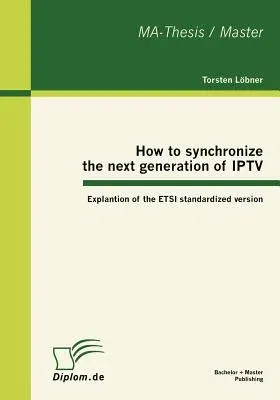In the last years, research of television systems has increasingly
changed from focusing on isolated networks to focusing on a combined
network of internet, telecommunication, television and other services.
One of the main aspects in that research topic is to guarantee that the
user experience will be the same or better than the user expects from a
common television system. The purpose of this book is to show a possible
protocol implementation for a television system with a packet oriented
underlying network. The thesis will show that ETSI TS 183 063 [1]
Annex W specified protocol extension to the Realtime Control Protocol
will extend a commonly known network system to reach the goals for the
users' quality needs. This book describes the steps from planning to
implementation and to evaluation. It will give the reader an overview of
the necessary requirements and of the development of the proof of
concept to show that the standardized environment will work. Open points
in the description of the environment are pointed out and possible
solutions are given. This book is divided into seven chapters. The first
chapters are the theoretical base, followed by the planning and
evaluation of the prototyped IDMS system. In chapter two, an overview of
the book's background and necessary protocols needed for communication
is given. This is completed by a description of the network framework,
which will be the platform for the synchronization approach. The
extension for television usage of the network which is described in
chapter two is explained in chapter three. The Software analyzed for the
usage in the prototyped implementation is described in chapter four. The
necessary modifications and extensions to this software and structure of
the applications used to build the environment for the described
implementation completes the theoretical part of the thesis. Chapter
five shows this software planning. Chapter six gives an overview of the
measurements to prove that the created


